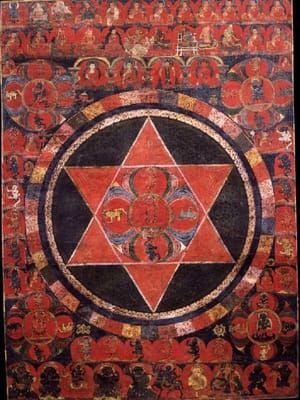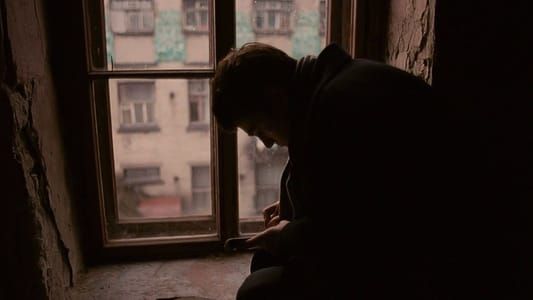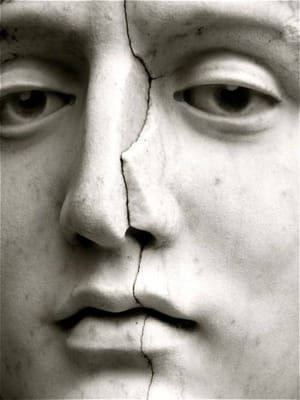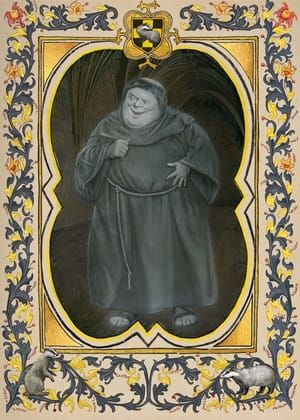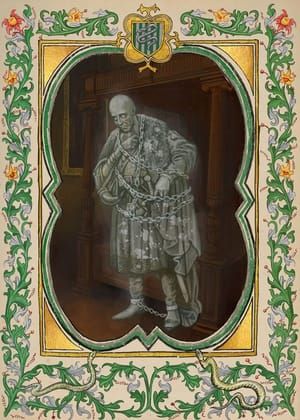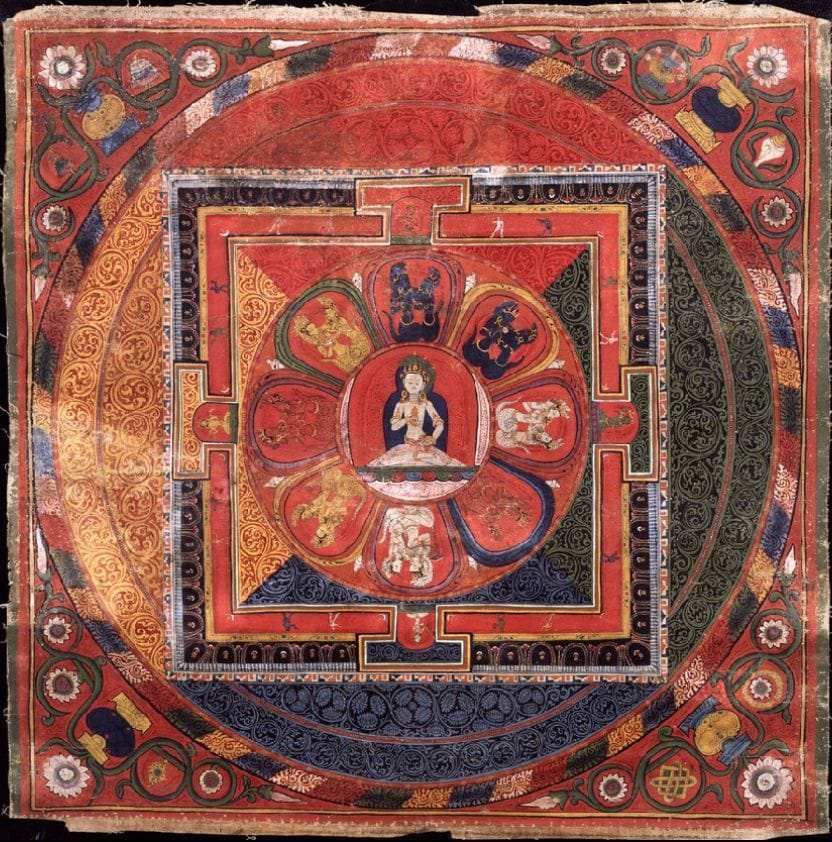

Mandala of Vajrasattva (Bodhisattva & Buddhist Deity) - (Sarvadurgati Tantra, Eight Nagas)
Unknown
Vajrapani and the mandala of the Eight Great Nagas from the Parishodhana Tantra.
Within the center of the two dimensional circular diagram (mandala) representing the top view of a three dimensional celestial palace and surroundings is Vajrapani, white in color, with one face and two hands, holding in the right a vajra to the heart and with the left a bell at the left hip; adorned with ornaments of jewel and garments of silk, with a green aureole and blue nimbus behind. In the surrounding four main and intermediate directions on a large eight-petalled lotus are the Eight Great Nagas and consorts: Ananta, Takshaka, Karkota, Kulika, Vasuki, Shankhapala, Padma, and Varuna; blue, white, red and yellow in color, with one face and two hands holding their own unique symbols each embracing a consort in the same appearance as themselves. The heads are crowned by the hoods of five snakes with the lower body in the form of a snake with a spotted coiled tail; adorned with jewel and gold ornaments.The floor of the palace is divided into four colors; red, green, yellow and blue. The outer square enclosure composed of variously colored lines are the four palace walls, with a red veranda outside, adorned with 16 offering goddesses of various colors. Each of the four doors (T-shaped) has a guardian. The outermost stylized square represents the ornate roof. The palace rests on a circle of decorative lotus patterns surrounded by the ring of five colored flames of pristine awareness. Each corner is adorned with a vase and lotus motif enriched with green vines, white circular blossoms and auspicious emblems.The mandala of Vajrapani and the Eight Great Nagas belongs to the set of 12 mandalas arising from the Sarvadurgati Parishodhana Tantra (Eliminating all Bad Rebirths) of the Yoga classification of the Sarma Schools. (See the painting Vajrapani and the 4 Direction Kings from the same set and another related mandala of Vajrapani and the Four Great Kings).
The painting is executed in Nepali style popular in the early period of Ngor monastary evidenced by the strong red and blue colors, copious floral patterning and rigid adherence to geometric form.
Jeff Watt 8-98
[http://www.datathangka.com/tkdetail.asp?id=911]
Uploaded on May 16, 2018 by Suzan Hamer
Unknown
artistArthur
Wait what?
